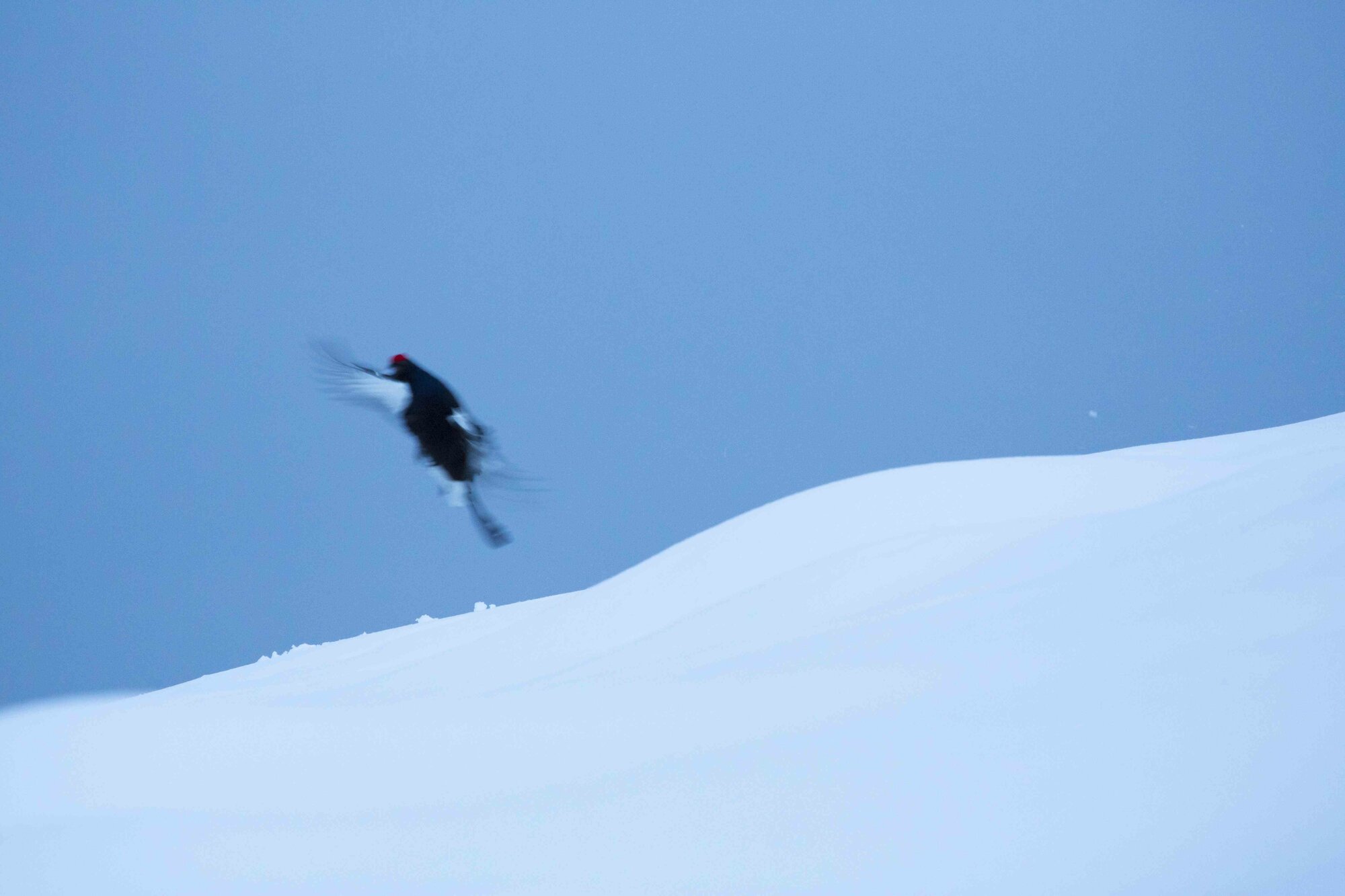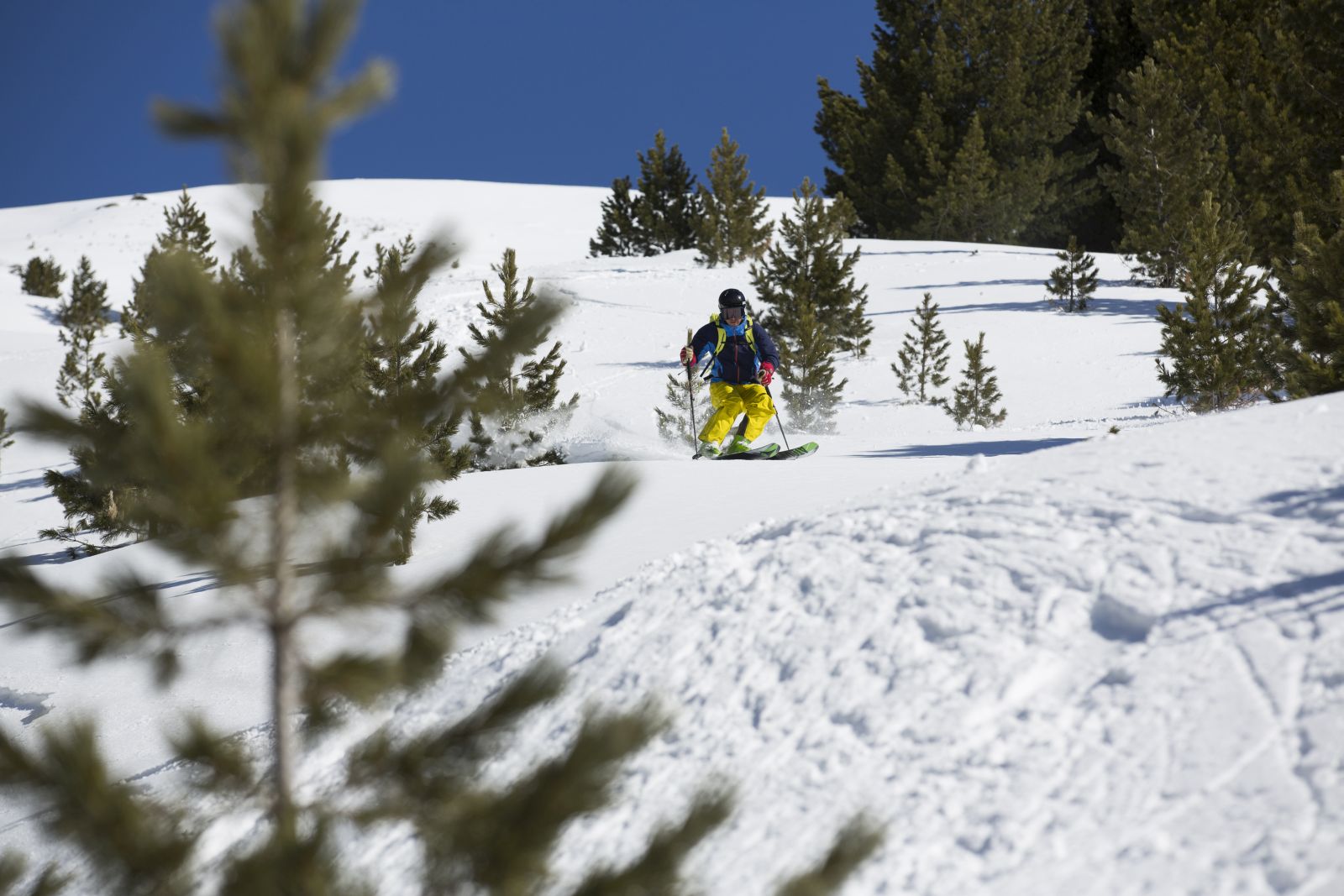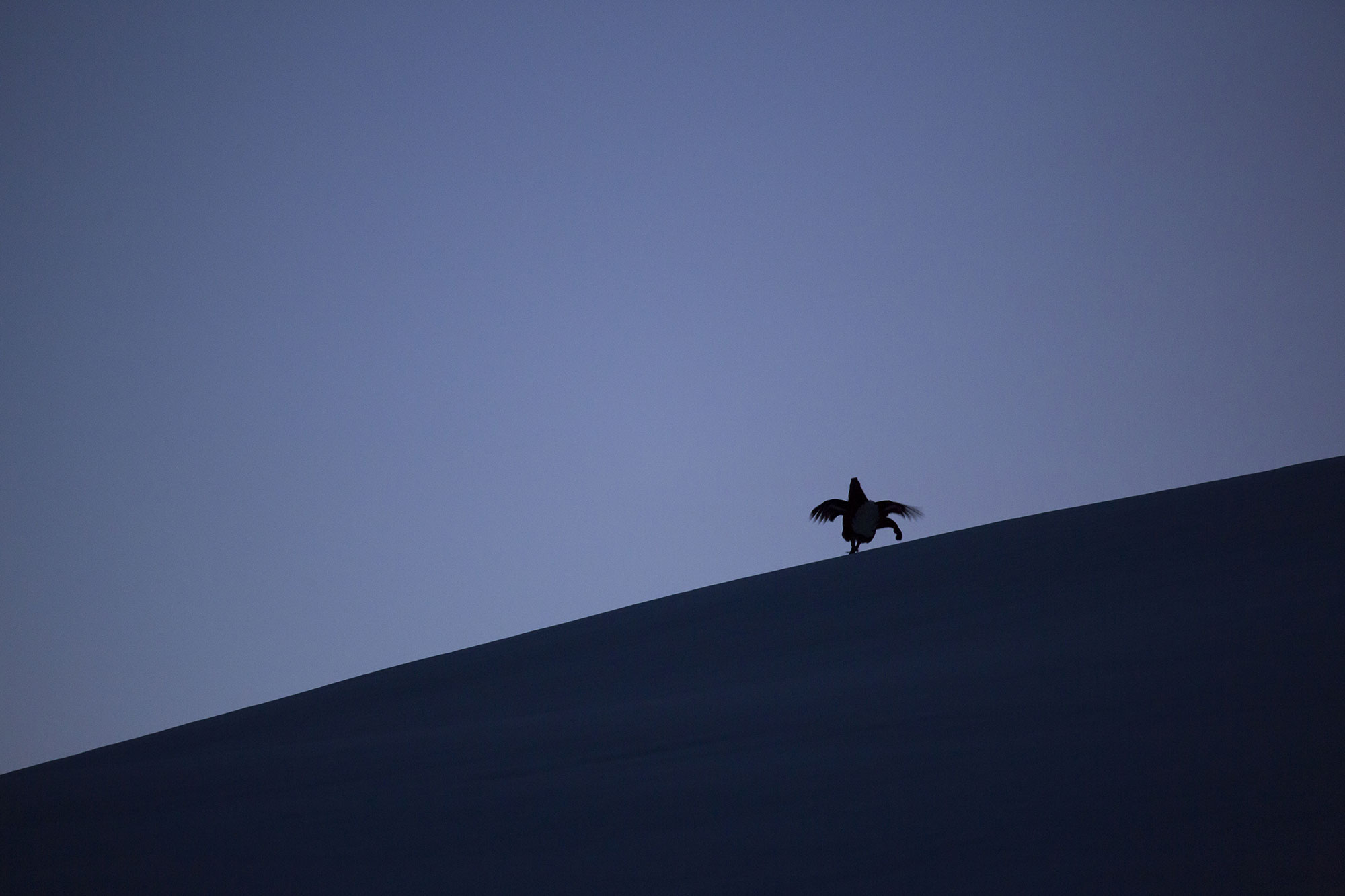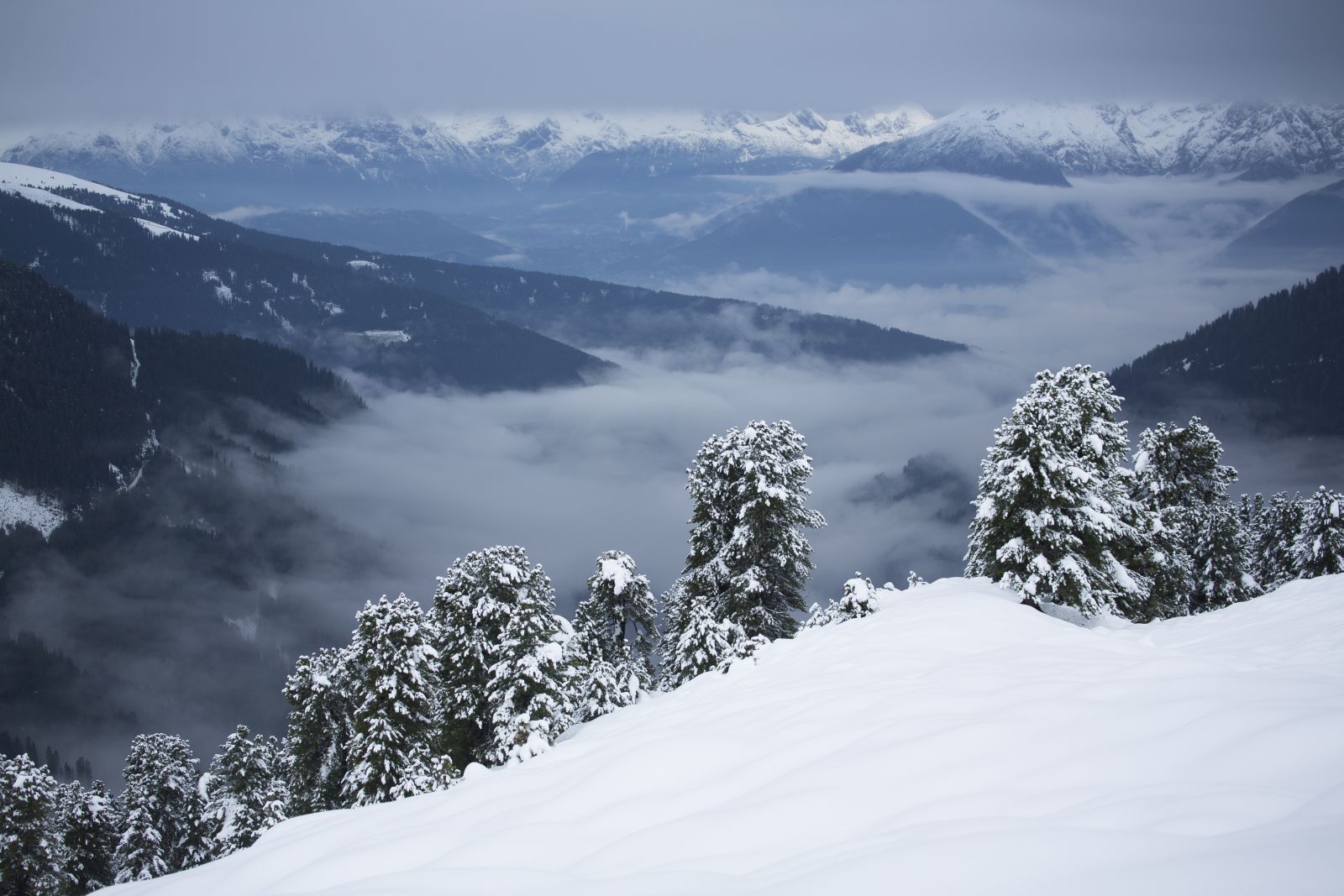Black and wood grouse try to survive the winter in energy-saving mode and avoid all unnecessary movement. The black grouse often lets itself get snowed in to gain protection from cold and storms. Just imagine, it also has to flee several times a day from tourers and then, with great effort, trudge back up the mountain ....
Specific characteristic - flight behaviour
When disturbed by ski tourers, grouse flee and fly up to 400 m away, causing them to waste a great deal of energy. When grouse flee, they usually fly downhill or downwards parallel to the slope.
Grouse are birds that live on the ground and thus have muscles that are far better developed for running than for flying. This means that, in most cases, after they have fled, the grouse reach their established habitat on foot. Being weakened by repeated flight can lead to the birds’ death or weakened females do not lay eggs with a thick shell and do not produce strong chicks.
Effect of being disturbed
The critical effects on grouse of being disturbed depend on the time of day and their location: when they are eating, just 1 or 2 flights of escape can be enough to have dramatic consequences for the birds’ condition; in other instances, being disturbed 3 to 5 times in quick succession leaves the birds seriously weakened.
A group of skiers passing by just once is less significant than being startled by individual skiers several times in the course of the day, especially when foraging.
The way the impact of tourists is spread over time is of great significance: investigations have shown that skiers skiing during the day over the wide open area where the birds meet to breed is irrelevant, but what has a serious impact is doing this early in the morning.
Code of Conduct:
| Animal species | Peculiarities | To be observed: |
| Wood grouse | mainly to be found in light forests; abandons its habitat if frequently disturbed. | Have regard to designated retreats. Relocate ski tours away from sensitive habitats. |
| Black grouse | Preferred habitat are small grassy ridges with mountain pines and green alder poking through the snow cover and adjacent powder snow The effects of being disturbed can be serious, especially in the early morning and evening. | Especially in thick snow, avoid areas with mountain pines and green alder with adjacent powder snow. Have regard to designated retreats. No off-ski slope ski tours at night and keep as far away as possible from the edge of the forest. |
| Snow grouse | Looks for food on wind-blown ridges and arêtes Shows moderate flight behaviour, escaping to the nearest areas of rock, and is a relatively good flier. | In case of contact give as wide a berth as possible and leave the bare ridge to the birds. |
| All types of game | Active at dusk | If possible never tour at dusk and in all cases keep to forest roads and ski slopes. Observe local ski slopes rules! |
Tyrolean Ski and Snowboard Tour Plan
We have worked intensively with environmentalists, hunters and conservation experts to draw up the Tyrolean Ski and Snowboard Tour Plan to investigate the impact of ski and snowboard tours on flora and fauna in the mountains.
If you need any further information about the protected sites and species and want to know how we came to choose them, you'll find all the basics in the Tyrolean Ski and Snowboard Tour Plan below, which is available for downloading.









